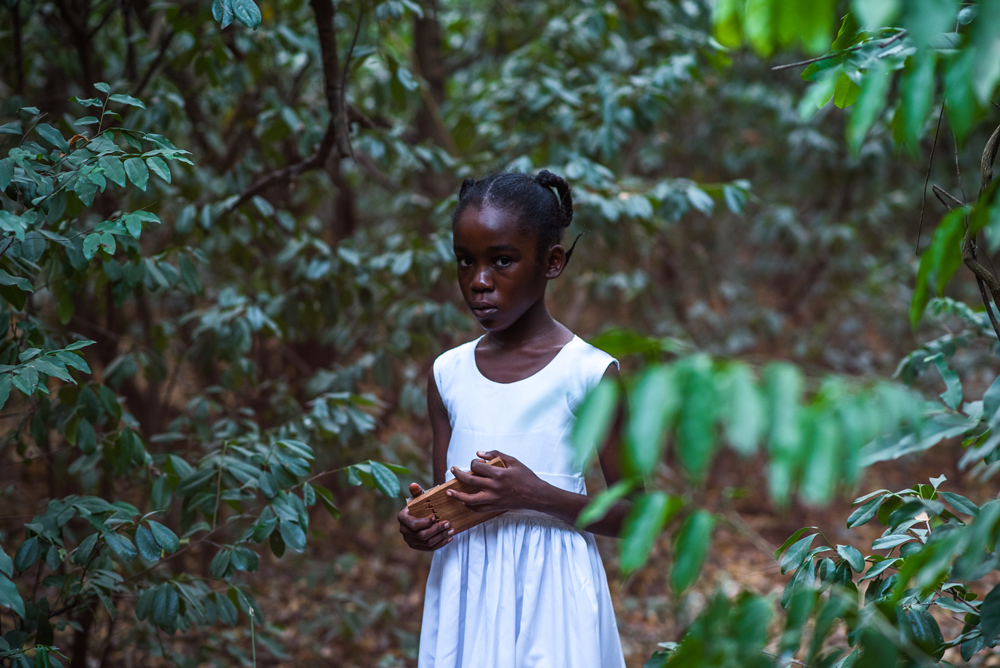In a scene from Blitz Bazawule’s electrifying feature debut “The Burial of Kojo,” the film’s title character (Joseph Otsiman) can be seen moving his family out of his home in a small village that sits on the water, carrying a box branded with the letter “A.” It’s a reference to Altra Gold, the mining company that has been recently taken over by the Chinese and prompting Kojo to move, but if you didn’t know better, you’d think Bazawule was planting an easter egg, somehow knowing well in advance that Ava DuVernay’s distribution company ARRAY would ultimately acquire the film to release this weekends in theaters and on Netflix.
“That’s crazy, the logo is very similar to the Array logo,” Bazawule, also known as Blitz the Ambassador, laughs when this coincidence is brought up. “That’s nuts. So you’ve seen shit that I never [have].”
It’s only fair when there’s so much else the writer/director shows audiences that they haven’t seen before in “The Burial of Kojo,” which packs in one staggering shot of Bazawule’s native Ghana after another as he lets a young girl named Esi (Cynthia Dankwa) relate the story of her father and uncle Kwabena (Kobina Amissah-Sam), who have been estranged for some time. Esi’s been having dreams of a land called the in-between, a place between life and death that she attempts to connect to her present-day reality where Kwabena brings word to Kojo that their mother has fallen ill. The two seem to get along just fine on the surface of things, but there’s a reason they haven’t spoken in years and when Kojo runs short on cash and Kwabena floats a plan to see if there’s any leftover treasure at an abandoned mine that he knew about from his old job at Altra Gold, the tension between them comes to a head.
As seen through Esi’s eyes, the sociopolitical climate that led the brothers to such desperate acts is allowed to sit in the background of “The Burial of Kojo,” with Bazawule initially inspired to tell the story after learning of China’s financial backing of local chiefs who would send workers into the mines while any profits would leave the country. But he also uses her innocence and imagination to bring forward how she can see the limitless potential of the culture when others no longer can, something the musician-turned-filmmaker actively demonstrates in bringing together a local crew for a continually astonishing cinematic experience, bursting with bold colors, kinetic camerawork and arresting imagery that effortlessly blends myth with what seems like unfiltered realism. After the film’s long journey to the screen, Bazawule spoke about not only making his first feature, but laying the groundwork for other films to come out of Ghana and how knowing his way around a beat as a celebrated hip-hop artist contributed to his filmmaking sensibilities.
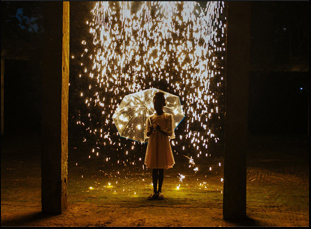
Yeah, there was an article about some miners that had been trapped and eventually died in this mine and it got the wheels turning, just in terms of what makes these young people risk their lives. But I wasn’t concerned that much about making a documentary because that’s not what it’s about. I was concerned about making sure that the people were humanized and the circumstances were circumstances. They weren’t the centerpiece, so the film deals with a lot of things. It’s not just mining. There are a lot of inequities in society, whether it’s from foreign incursion or local chiefs, so I wanted to explore that, but more importantly, I wanted to explore a father/daughter relationship, which we don’t see much in cinema, definitely not in African cinema.
How did Esi, the young girl, come to tell this story of brothers?
I have to give props to my grandmother because that’s where the stories come from for me. Prior to having access to television and Hollywood movies, it was my grandmother’s stories. There was always this all-knowing little child, and mostly it was a girl who could decipher what was going on that I’ve always been drawn to that in my work, so making this film, it was very easy to center this little black girl and allowing her to be the voice, but also sibling rivalry is also one of the oldest [stories]. If we think biblically, we can go back to Cain and Abel, Jacob and Esau, Joseph and his brothers — I’m sure if we dug into Egyptian mythology and history, that’s evident because they jacked all of that from Egypt anyway. [laughs] My point is [these stories are] as old as time and we know that, so I knew that would be the strongest point of conflict for me and if I built that conflict well and created this element of guilt, then we will always be on this journey trying to figure it out.
Some of the sequences in the film feels as if they emerged directly from the music, rather than the other way around. Was that in fact the case?
No, actually not. Funny enough, I had no music [in mind] throughout the production of the film and I very much worried that I wouldn’t, which would’ve been quite embarrassing, knowing that I’m most popularly known as a musician. I thought I was going to have an epic fail where people felt, “Well, he traded one for the other.” And it wasn’t until I was completely done cutting, locked picture, that’s when the first ideas came for music. So it was scary. But you have an internal metronome that’s kind of hard-wired now because of how long I’ve made music for, where pacing, rhythm, and harmony work irrespective of medium, so I was floating in this world that was completely nonmusical, but it was still lyrical. The framing [of shots] was lyrical because I know music isn’t always verbal. It’s timing, it’s pacing, so those things already existed in the film and when I got to making the music for it, it was fairly easy. But it wasn’t until picture was done when I discovered the music existed.
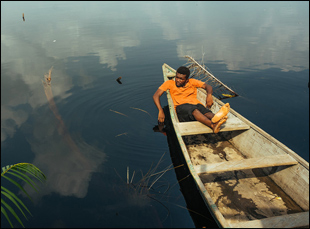
Yeah, my [cinematographer] Michael Fernandez is a musician as well, so we met on the music circuit. We’re both rappers and we have a shorthand, which is hip-hop. And hip-hop is phenomenal. I don’t even think people understand what a dexterous culture hip-hop is because hip-hop is essentially sample culture, so you literally can take anything and it’s hip-hop. You take construction boots and they’re Timberlands [worn by rappers]. It’s a culture of repurposing. So we literally repurposed cinema into something that was a clear, unique voice for us, but through a hip-hop lens.
Michael and I had very good conversations about overcoming fear. That was the main thing, saying “Look, we’re going to be creating a new voice. We’re going to be contributing significantly to the canon of cinema with this film. Whether we’ll be successful at that or not is irrelevant here. That’s our goal. And that goal is going to require clarity and bravery.” And that was our keyword. We’ve got to be brave with the camera. That gave us a means of checking each other and when either of us was falling into a lazy pattern of doing what we’ve already seen, we’d stop each other and say, “No, we’ve got to be brave with the camera. What does this scene call for?” So sometimes we’d shoot from under a [glass] table when the gold deal is going on because that’s how we felt.
Another thing we discussed a lot was genetic memory, something that I don’t think a lot of people even consider. [Michael’s] Mexican-American, so he comes from a completely different tradition, but similar in terms of storytelling, so our conversation was constantly [about] how we remember [things]. For the little girl, that’s me. And that’s him. How do we remember our eyeline when we were listening to adult conversations? Was everything clear? No. Things were obstructed. If you think about your childhood and conversations — some traumatic stuff you may have heard in passing – it’s never clear. You walk into the living room, you’re listening to adults’ conversation, and you miss a part of it because they kick you out of the room and then you creep back in. And there were scenes where that was critical for where the camera went. Those were informed specifically from our ideas of genetic memory and what are the things inside of us. There were conversations about proximity – camera proximity and color. Those were two very significant motifs.
It looked like a remarkable amount of planning had to go into the color since it appears it was all done on set. What was it like figuring out the lighting design?
The lighting design was ad-hoc. It was whatever we had. ([aughs] But what was consistent was our choices about what color would represent, so we decided a very long time ago that red was going to represent power and blue was going to represent the lack of power, so even if it’s subconscious, the audience member knows when Kojo starts the film, he’s clad in red until he loses power to his brother when he’s clad in blue. There’s a scene where the brother’s smoking and behind [Kojo] at the gate, his brother’s lit in blue and Kojo’s lit with red and when we played back when they get into the bar to discuss what happens, the color patterns change again, so those things were critical. Then the little girl was clad in white because her power wasn’t derivative. Her power was innate and wasn’t from this palette we had created and if you notice, when Kojo was getting baptized, that was his innate power, so they were [both] clad in white. We knew we didn’t have money, so the only thing you could do was be specific and it also helped with planning. Within our costume space, there was all the red stuff [on one side], and all the blue stuff [on the other]. And we had a red light and a blue light [on set]. [laughs] That was it.
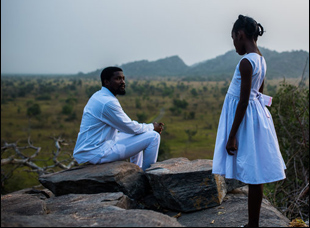
I can’t tell you. [laughs]
I’ll accept that because it’s magic.
It’s magic. If I tell you that, then the trick’s gone, bro. [laughs] I can’t do that. But what I will say is that’s a moment of specificity. Again, when we see Kojo, he’s thinking right after his brother shows up, and he’s in this bar in red light, but he ended up in blue light and then you have the remnants of this light that goes into the game. There were all these little things that were going on in there, but the idea specifically was to be consistent with our color palette and saying if red represented power, blue represented the lack of power, let’s maintain that as our motif. Let’s not stray from that.
In an article on Shadow and Act just after wrapping the film, you mentioned it was important to build an infrastructure for production in Ghana – was there actually any you could draw on to make this or did you have to build it from scratch?
It was from scratch. I think the only person who had some experience on crew was my costume designer who had worked on “Beasts of No Nation,” which shot three years before we were in production. But she hadn’t worked on anything of that caliber since and that’s what’s typical about Ghana. A Hollywood production would land, they’d unload, shoot, pack up and disappear, leaving almost nothing. A few people would gain a little experience here and there, but it’s not consistent. So infrastructure was something that was super-challenging and we’ve done good in trying to [help facilitate careers for] the people who worked on it and trying to get people placed. A lot of the actors I’ve been able to get them out of the country for some of our touring for the film and one of them is getting them cast in a big project in the U.K. now. It’s important we don’t create these fallow moments where a film like “The Burial of Kojo” gets shot and then 10 years later, we don’t remember anything and we’ve got to start from scratch.
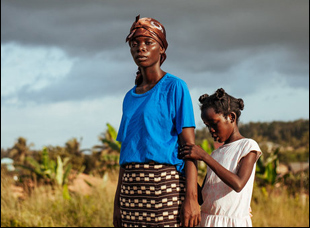
When it’s your first feature, what’s it like getting to the finish line and getting it out there?
It is a dream on many levels and sitting here at ARRAY with Ava [DuVernay] backing this film is even more incredible. We knew we achieved a feat, one that was way out of our league and that none of us was even prepared for. But it’s another thing for the work to be received as it has and in a way, validated by other practitioners. For a practitioner as astute as Ava [to acknowledge that], it’s encouraging that a bunch of people with absolutely no money can make something that resonate globally because our only goal was truthful moments. That was it. That was the only thing we cared about and I’m glad we were able to achieve that.
“The Burial of Kojo” opens on March 29th in Los Angeles at the Ahrya Fine Arts and New York at the Stuart Cinema and Cafe. A full list of screenings and dates is here. It is also streaming now on Netflix here.




